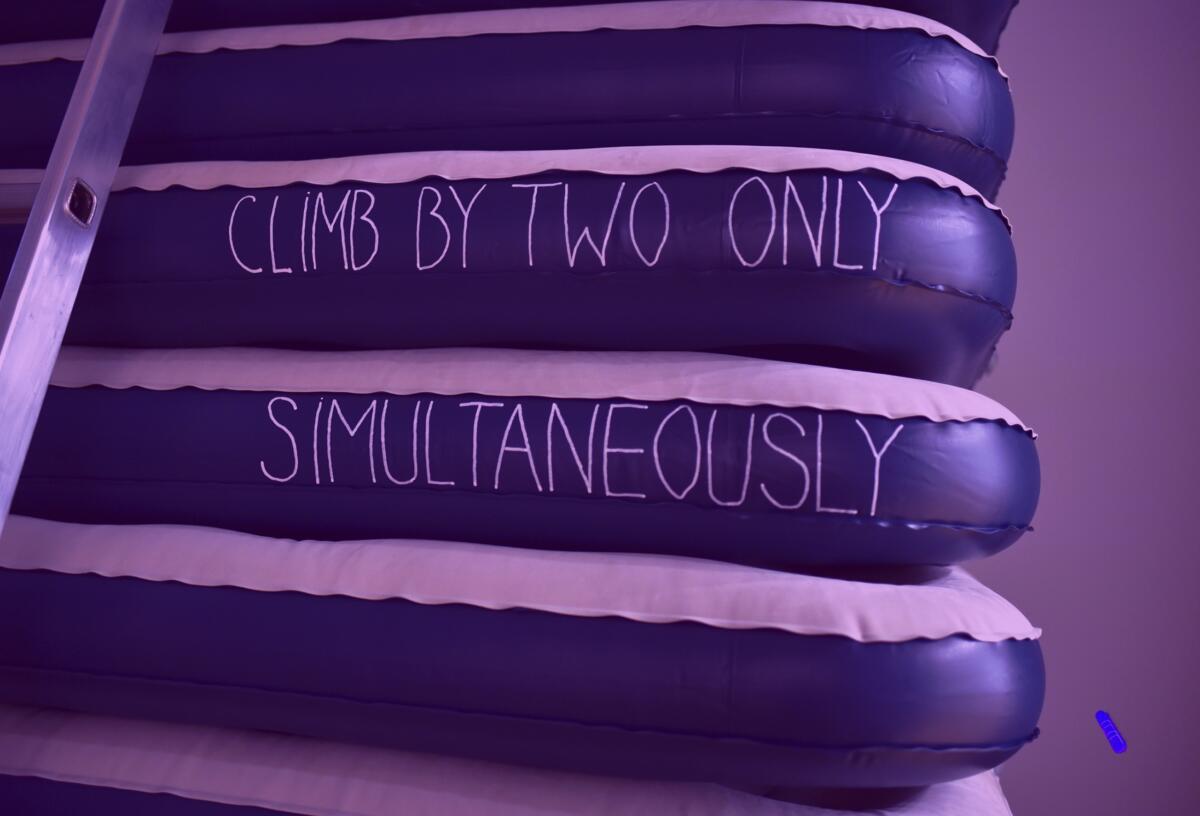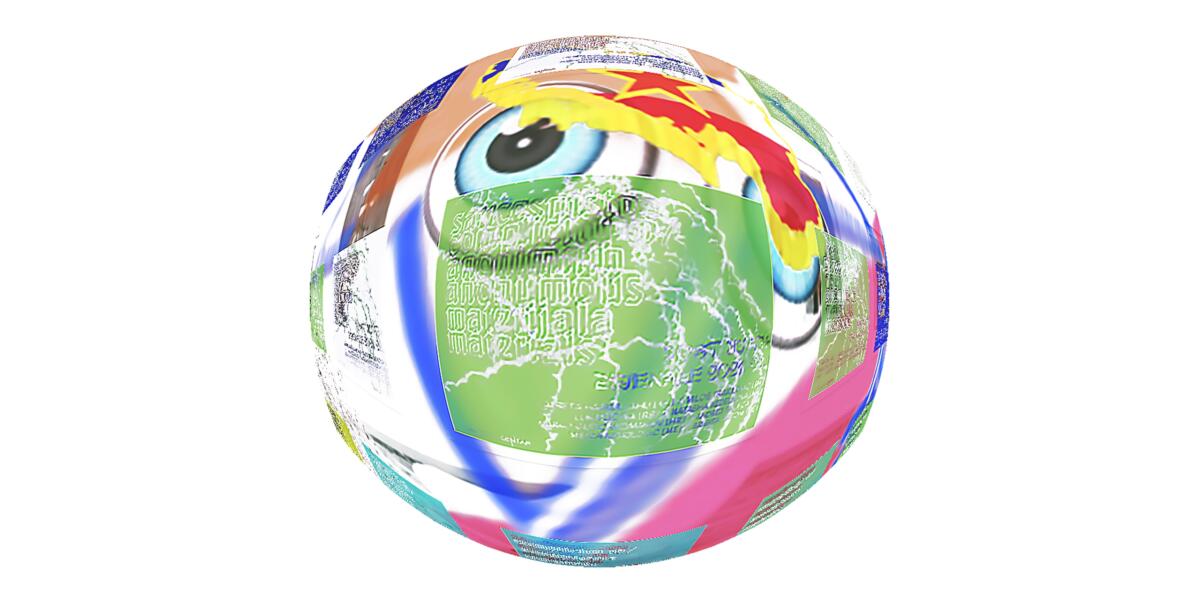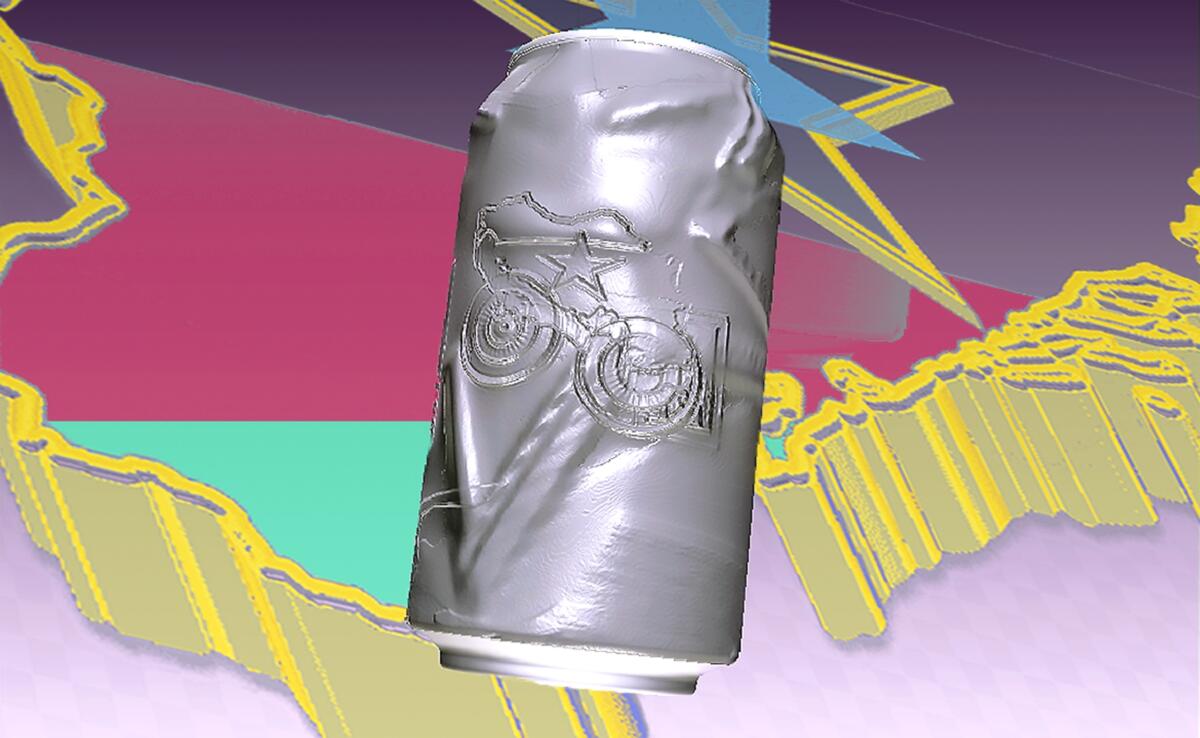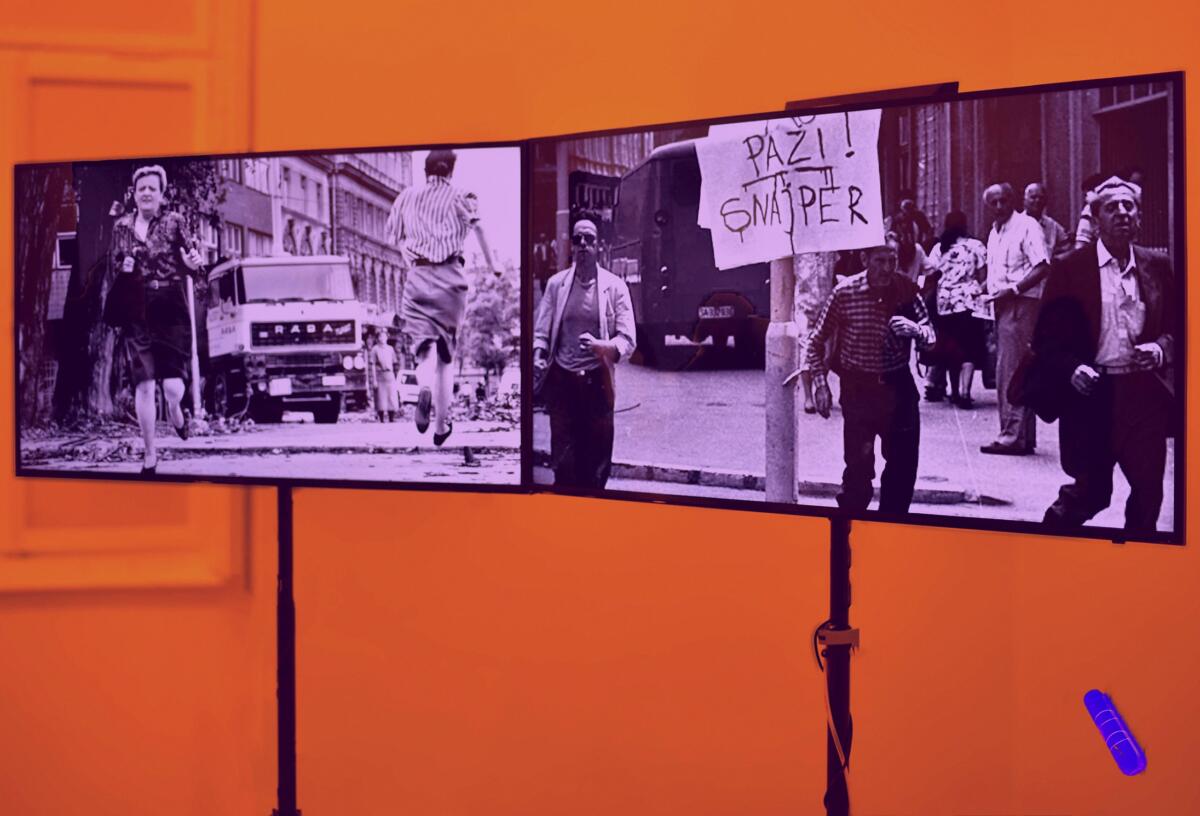Q&A: Post-Yu+th ART Biennale: Complicity of Anonymous Materials, [Podgorica]
![Q&A: Post-Yu+th ART Biennale: Complicity of Anonymous Materials, [Podgorica]](https://blokmagazine.com/wp-content/uploads/2022/01/01-exhibition-image-courtesy-of-csucg-1200x816.jpg)
This Q&A column typically focuses on the indeterminate borders between off-/project-/artist-run spaces and the people that keep them going. We’ve decided to approach this first feature of 2022 from a slightly different angle; instead of focusing on one space in the region known as East / Central Europe, we’re highlighting an exhibition with a similarly critical, liminal ethos that presents artists from the seven states that emerged from the breakup of Yugoslavia.
Catalogue preview (link)
ARTISTS / @IG-profiles :
MILOŠ TRAKILOVIĆ (Bosnia and Herzegovina)
@milos.trakilovic
________________________
@akvae
________________________
– ANNE AMPERSAND (Croatia) [1]
@an.ampersand
________________
@mimmichica
________________________
–BRIGITA ANTONI (Montenegro)
@brigeeuu_
________________________________
NATASHA NEDELKOVA (North Macedonia)
@nedelkovanatasha
________________________
LAURETA HAJRULLAHU (Kosovo)
@bananapatatoes
________________
ANDREJ ŠKUFCA (Slovenia)
@andrej.skufca
________________
LUKA LIČINA (Serbia)
@lukalich
________
09.12. 2021 – 30.01.2022 / Curator: Darko Vukic
Organized by the Center for Contemporary Art Montenegro
– CSUCG in Podgorica at the premises of Petrovića Castle.
________
Link: https://csucg.co.me/aktuelnosti/bijenale-mladih-post-yuth/
IG: Center-IG < @centar_savremene_umjetnosti_cg
_____
Curator:
webpage: vukicd.info
IG: @savazolog
$VVARM @swarmzine
(1) Is there a limit?
(2) Is it sustainable?
(3) What is the shape?
(4) Future or Past?
(5) Kin?
(6) Is it enough?
[*Address Directly]
(a) How does this relate to the independent scene/communities in this region?
(b) Is there a way to establish some links (off-space)?
[+ + +]
(I) What is the significance of this 7 nation/country constellation?
(II) How do the selected artists work within this?
(III) How did you arrive at the final constellation of artists/projects/works?
(VI) What were your conceptual aims as a curator?
(V) How does this exhibition exist within the broader socio-political contemporary art context of Montenegro?
*Instead highlighting a specific independent space, we are focusing on an exhibition that adapts/embraces the spirit that independent/artist-run, non-institutional communities typically embody? […]
ANSWRS:
Speculative aesthetics, guerilla institutional camouflage, error tolerance, anonymity as a feature, and hidden writing; to name a few concept-samples employed in the making of the framework of the biennale with regards to notions from the ‘ecology of affordance’ – as specified in ‘The Theory of Affordance’ [2].
Post-Yu+th – is a regional art-biennale in Montenegro. Contextualized within the sphere of peripheral art-worlds in post-Yugoslav countries. With the chance to merge different cases and scopes in the practices of emergent artists that are exemplary, but not usually able to create meeting points with frequency.
The conditions have to be ‘relative’ to the themes and subjects for the ‘surface’ to ‘afford needed support’. ‘Stand-on-able’ and permissible, the posture through different layouts– that afford different behaviors for different ‘subject-matters’ –via different conditional, independent or institutional and mechanical encounters.
The conceptual trajectory of this exhibition is taking action in translation, transition and adaptation of one major Western European exhibition that was held in Fridericianum (2013-’14). With the title derived from recent theory-fiction writing: Speculations on Anonymous Materials [3]. Pro-retrogressive future of the ecology of affordance, insightful, and anthropic account on the conditions –has been enabled. And logic of affordance itself is relative towards the dependency of its being.
This uncovers something that is already familiar to our local art scenes and communities, and it could be stated as a policy that inevitably pulls-in political connotations like this one, where: the environment is) not (a medium.
This type of biennale differs from the regional biennials, in that it presents an artwork from one author for each of the countries established as a result of the collapse of the former Yugoslavia. It still lacks the effective agency for its possible and particular format. And it is a matter of personal bravery and involvement as well as expectancy of the collective turn-out, always transparent or public.
Its overall capacity, development-potency and effectiveness in communicating and sharing meaning, between the participants or actors in the field and the public, is minimised by the administrative logic and bureaucratically functioning operations of the institutional (governmental) platforms, as opposed to the alternative cultures and ‘enthusiastic’ independent forces of the common cultural workers, from deliberate organisations and projects across the region.
Pillars of the strongholds called institutions employ polite ‘dehumanized’ labor dynamics, with the cooperation and understanding of their importance from expectedly more essential exchanges of informational support above all.
I risk this answer by addressing the experiences, following what eventually feeds-back to be re-addressed in a more approachable and intelligible fashion. It would all add-up to the image of this splitting, but in the direction of priorities and strategies of subsistence. This ‘situatedness’ seems almost like a trap in the dead-centre.

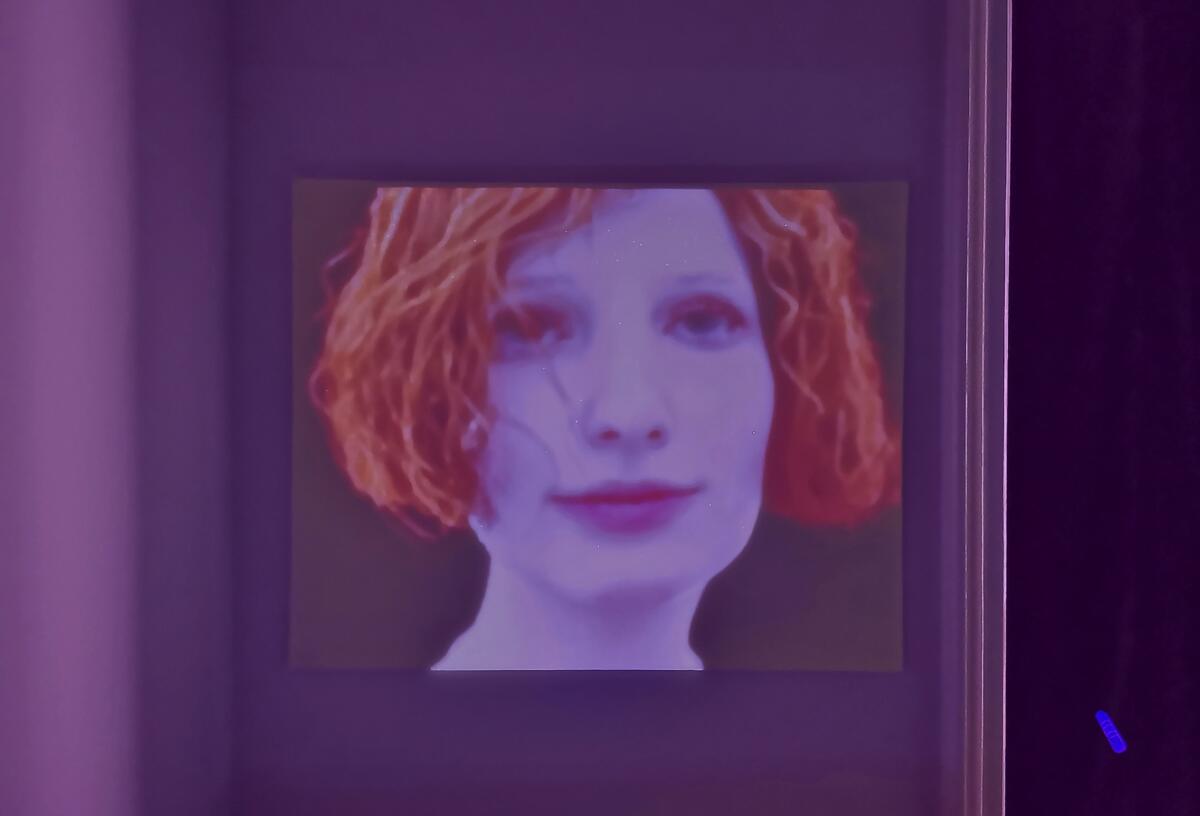

Fresh and realized space for this context is highly energized by sensitivity levels, it is inevitably a terrain of formation of the operating oppositions to the essentials of this ‘eventing’.
Selected and displayed alongside each-other, works open up to some particular topics of infra-differing narrations and light motifs. Singular artworks contain their respective registers and perspectives by which they contribute to that which is speculated and proposed as ‘complicity’, having their counter-agency with that which is called ‘anonymous’, and regarding the present conditions of that which is determined as ‘material’.
This edition is actually probing these three key terms with some concrete lines of mutuality and unbounding. This unbounding is exactly the proximity of this sourceless completeness of that which is shared through our complying, compiling and complicity.
This is a focal point, of being-compatible, and it starts by initiating different types of forces in random flux and order – coming this far already, it is a ‘colonial’ porosity of propositional logic and language-based practices or performances. The very interaction between any number of agencies, or their silent parties gathered around these applications in their attempt at subtle treatments of strategies and the ways of their handling.
‘Abstracting’ is thus the core of the project’s versatility, as a partly uncertain entity of the institutional lens. It is an implementation throughout these ‘protocols’, on behalf of the institution, and those ‘processes’ of the installment of works on the artist’s behalf.
I am deliberately planting these quotation marks as ‘triggers’ toward somewhat variable conclusions that we have accomplished something by being dedicatedly complicit in the making of the biennial format. Defragmented, primarily in order to achieve and succeed in the project’s terminal layer. Likely to be an example for the executioner of the ‘project’s’ hierarchy stream of human-resources, PR, correspondences and responsibilities.
But all this is thanks to ‘anonymity’, or rather anonymisation of features, resources, and without the constant presence of context-sensitive, and often even more delicate ‘complex-materials’ or materialized bypass-language – lexical application of ‘the thing’ at-hand.
This is the ‘n-field’ of the getting to know through time, of what is this material given to ‘them’ as instrumental -institution, as well as something that was at-hand for ‘us’.This can not, and must not be ‘personalised’, as personal being ad-hoc ideological havoc. It stands in opposition.
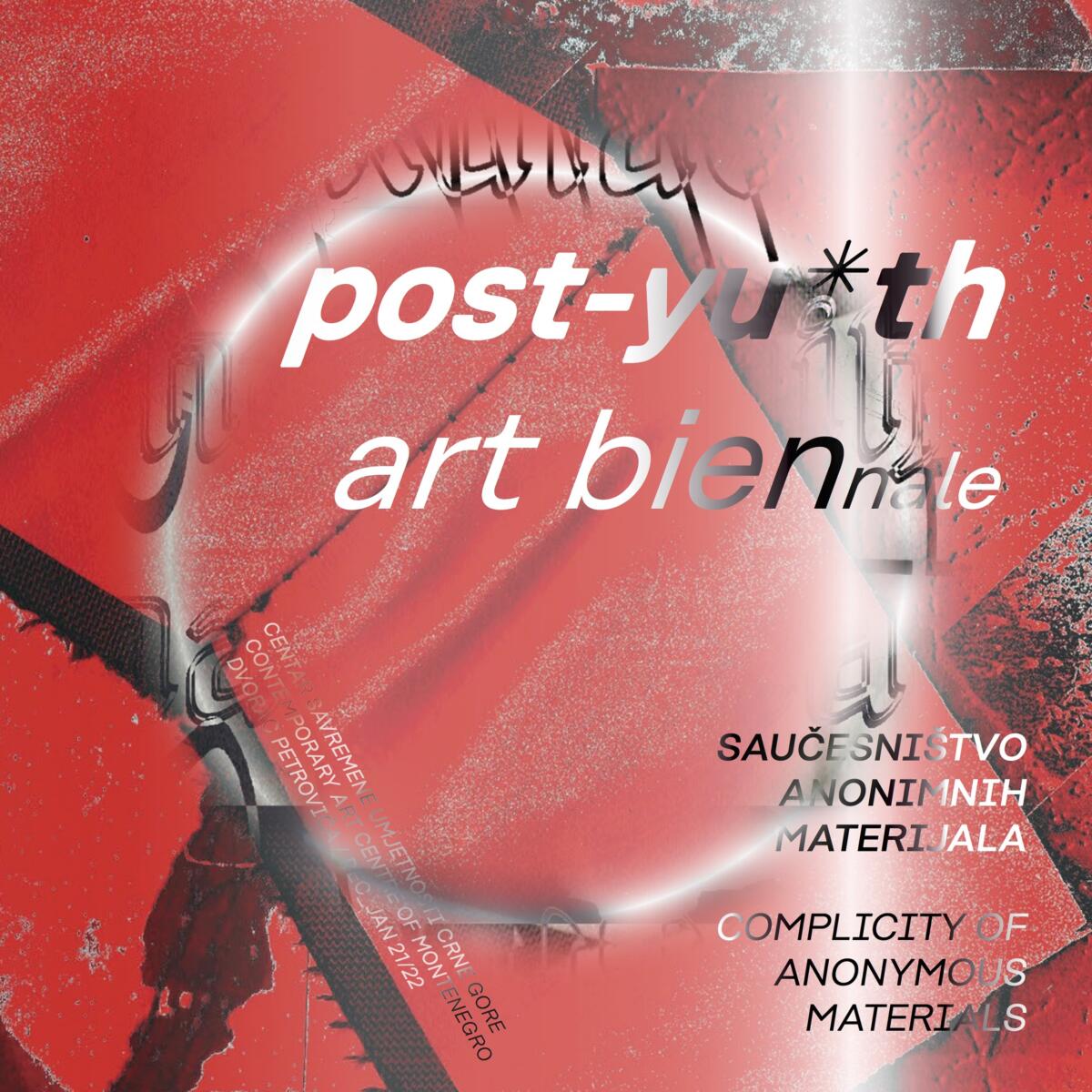
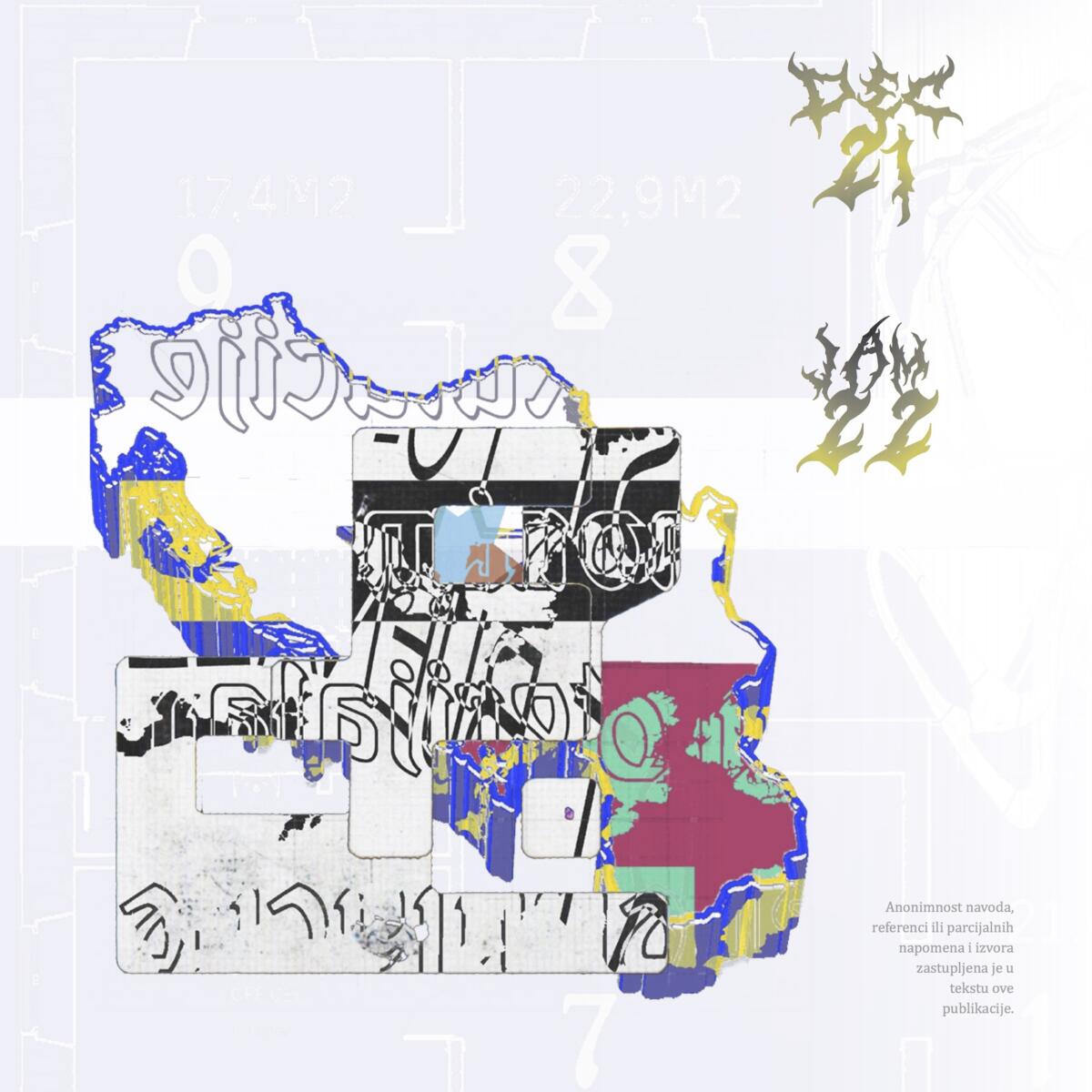
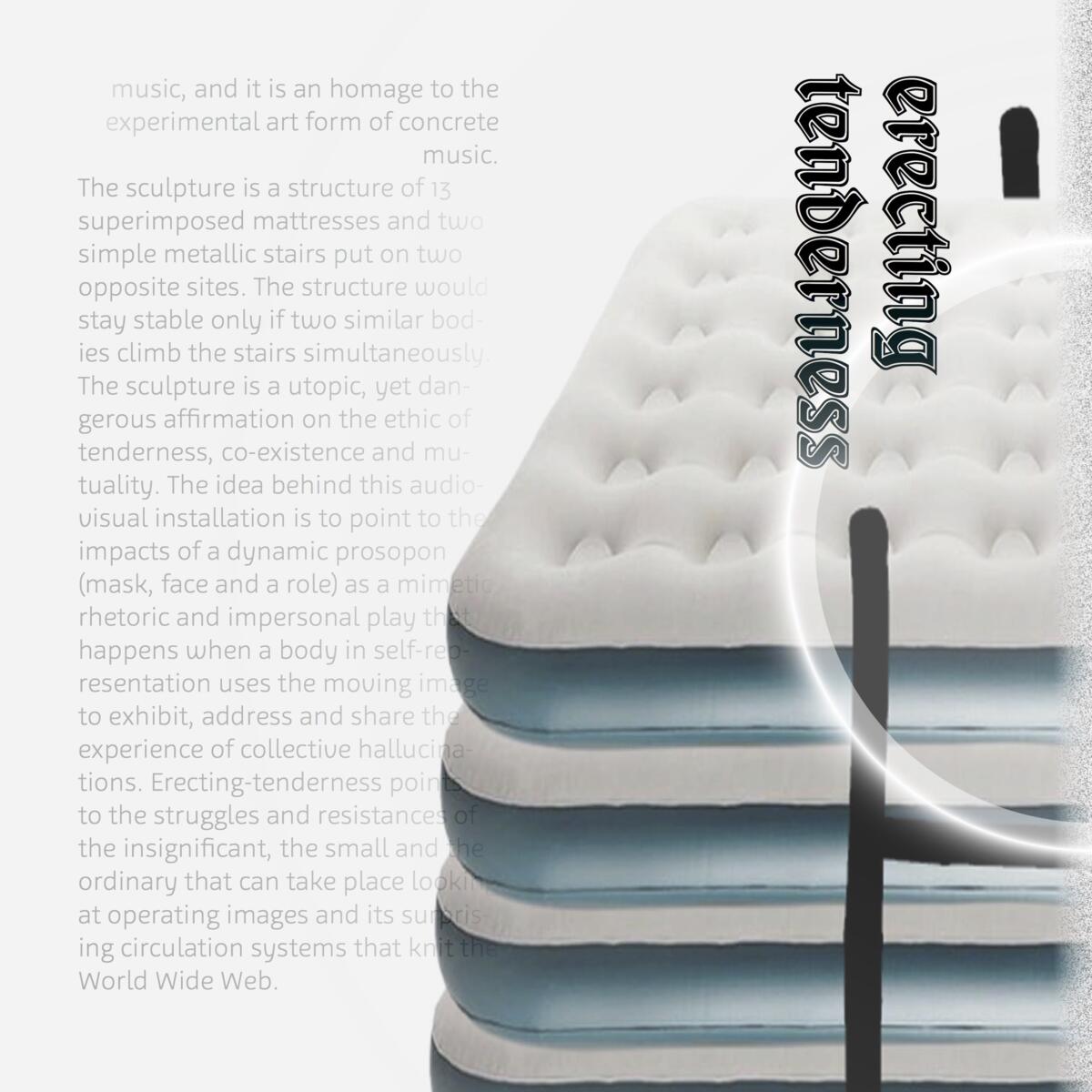
For me it was surely an important exercise in experimentation, regardless of being auto compressed by the regimes of the ‘one-man army’ complex. Getting along with the messy logic of the working network, its under-currency – the hidden writing that has to be impersonalized – is something in accordance with the realization that, as such, has gotten through by bypassing the randomly broken rules of the game.
With the mysterious time-off and the syntactic overabundance of the allusive phrasing, it immensely involves us with… I am close to making a ‘make-up’ statement here, investigating the matter of ‘intrigue’ and the uncovering – of the actual possibility for ‘fueling’ these libidinal governances – in the matching ways of a mash-up within the will to utilize it in the future.
And lastly, in the depths of the centralist world-views and the perspectives on perception and universal ideals, ideas, forms… It comes to our attention that the deeper the background, the farther the pin-hole of opportunity is to grasping and perceiving the general political senses, as a rudimentary abstracting force: abstract or not, it’s here, with clearance or without, it’s coming -for completion by the date. But it is also the time for a reasonable secession or settlement.
Only after accounts like this, clouded with abstractions, utterly invoking and evoking the will of the possible – or the will to subvert the imperative structure of thresholds imposed onto artist’s procedures of implementing the work, that does not abide the same ‘concrete’ logic being handed from the centre to capacitate the work. But, this is to some extent only an internal, insider insight into the procession and the outcome, which in the context and light of the audience does not turn out to be visible, it remains a hidden part of those small efforts made along the way.
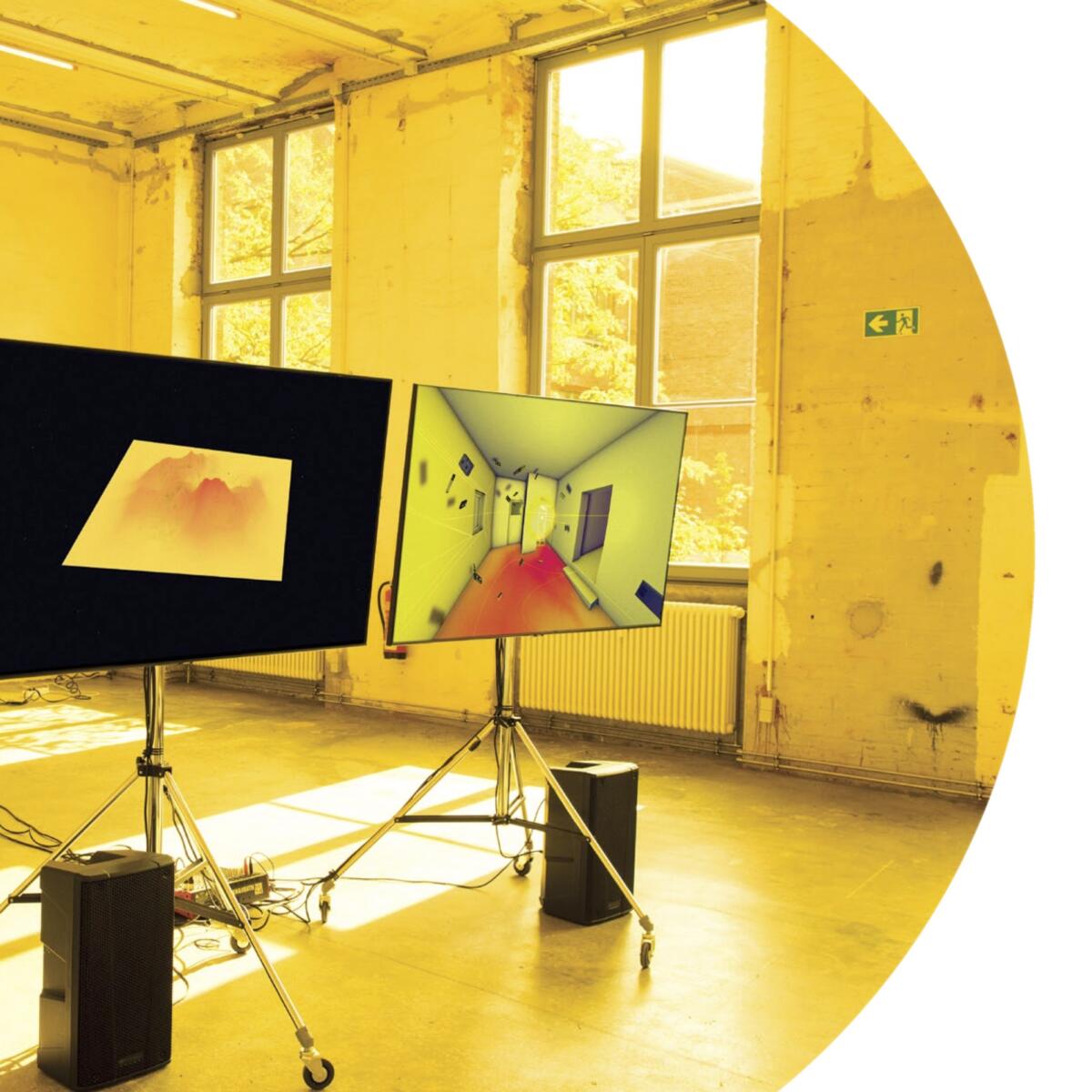
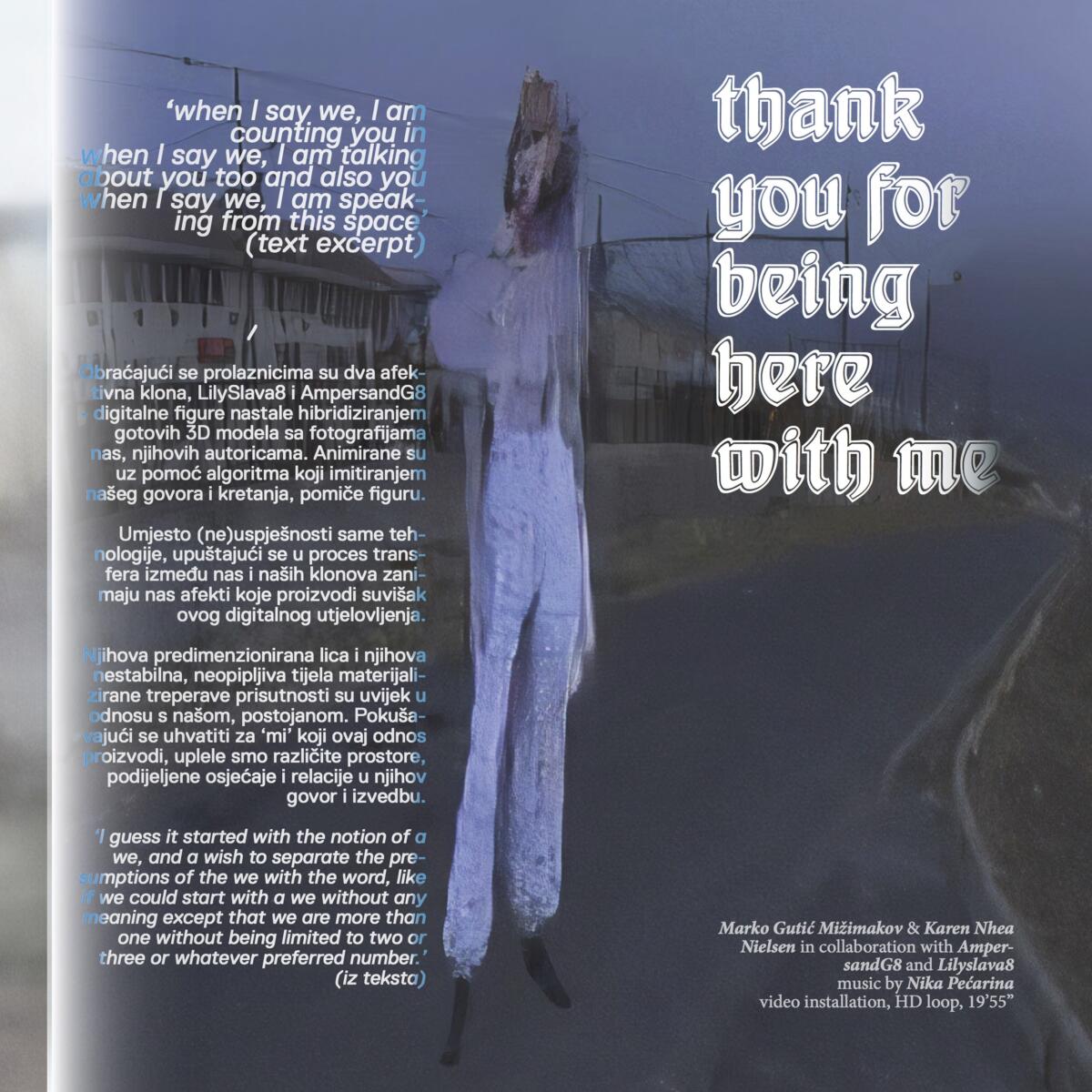
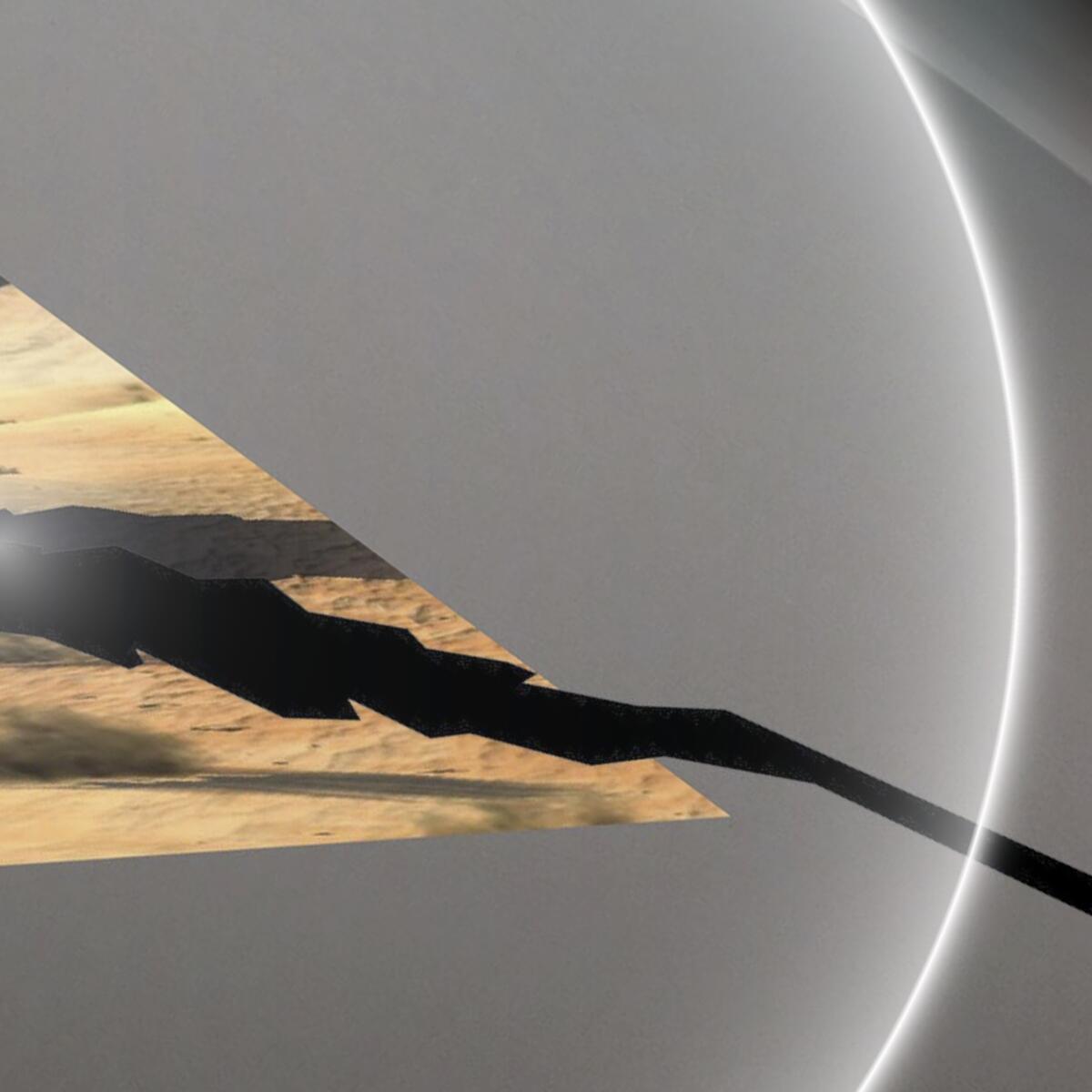
Distributed by contractors, all anticipated, but subordinated by, a force to exhibit. To become an excellent topographical base for a pandemonius experience inside the experiment network: a maze of peers whose voices went into ongoing considerations, it is this which will ultimately get ‘us’ out.
Out of the actions that conspire nothing more familiar and further apart, moreover –and out.
[1] Anne Ampersandis a digital figure (alter – persona) developed by Marko Gutić Mižimakov (HR).
[2] The Ecological Approach to Visual Perception; Written by James J. Gibson.
[3] Cyclonopedia: Complicity with Anonymous Materials; by Reza Negarestani.
Imprint
| Artist | Miloš Trakilović, Marko Gutić Mižimakov/Anne Ampersand, Milica Mijajlović, Brigita Antioni, Natasha Nedelkova, Laureta Hajrullahu, Andrej Škufca, Luka Ličina |
| Exhibition | Post-Yu+th Art Biennale | Complicity of Anonymous Materials |
| Place / venue | Organized by the Center for Contemporary Art Montenegro in Podgorica at the premises of Petrovića Castle. |
| Dates | 09 December 2021 – 30 January 2022 |
| Curated by | Darko Vukic |
| Website | csucg.co.me/ |
| Index | Andrej Škufca Brigita Antioni Kathryn Zazenski Laureta Hajrullahu Luka Ličina Marko Gutić Mižimakov/Anne Ampersand Milica Mijajlović Miloš Trakilović Natasha Nedelkova Off Space Q&A |

